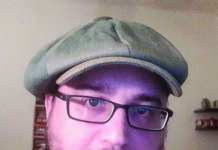
David Ben Hooren
Museums are often viewed as repositories of culture and history, showcasing the beauty and creativity of humanity.
However, behind many works of art hanging on museum walls lies a dark history of theft, violence and colonialism. Museums worldwide are grappling with the complex legacies of their collections.
In New York in 2022, a new law was passed that addresses one painful chapter of history: the Holocaust. Signed by Gov. Kathy Hochul, this law mandates that the state’s museums must acknowledge whether a work of art in their possession was stolen by the Nazi regime. This legislation is part of a broader effort to honor and support Holocaust survivors and their families.
The Holocaust left an indelible scar on history. Among the many horrors of that time, the Nazis looted approximately 600,000 artworks from Jewish individuals and families. Decades later, the legacy of these thefts continues to reverberate in the lives of survivors and their descendants, many of whom have not regained possession of their lost treasures.
The issue of Nazi-looted art extends far beyond New York and is a global concern. Advocates for Holocaust survivors have long called for art institutions worldwide to take more proactive measures in identifying the rightful owners of looted artworks in their collections. While some progress has been made, challenges persist.
The Washington Principles, signed by 44 countries in 1998, established international guidelines for the return of Nazi-looted art. Countries like Austria and Germany have returned tens of thousands of stolen items in accordance with those principles. However, the process of identifying rightful owners and returning looted art can be slow, complicated and sometimes unresolved, particularly when art is swept up in the chaos of war or political instability.
Advocates for Holocaust survivors have long called on art institutions to do better. In 2018, the Louvre opened an exhibition of art stolen by Nazis, claiming that the goal was to find the works’ rightful owners. But restitution scholar Marc Masurovsky told The Washington Post’s James McAuley that these efforts were “far too little, far too late.” The museum, he said, should be more proactive about identifying the rightful owners of the works in its collections — a vital step in restitution that museums around the world struggle with.
Restitution battles have seen both victories and setbacks in recent years. French museums returned 15 Nazi-looted artworks to Jewish families in early 2022, demonstrating progress in addressing historical injustices. However, challenges remain, with some European nations largely ignoring or inadequately implementing the Washington Principles.
The new law, however, does not address the issue of restitution. Restitution disputes involving artworks have been a contentious issue in the state, with cases involving prominent museums.
Moreover, the law focuses primarily on Nazi-looted art from Europe and does not acknowledge art stolen from non-European countries. This limitation has raised questions about the law’s scope and its potential to address the broader global issue of stolen art.
As of now, several prominent New York museums, including the Met, the Whitney Museum of American Art, MoMA, the Guggenheim and the Brooklyn Museum have not released information on how they plan to comply with the new law’s requirements.
The long and short of it is that art museums around the globe, with few exceptions, have artworks within their walls that were expropriated by illegal means, and the time is long overdue for justice to prevail after eight long decades since the end of World War II.
Legislation must be enacted in such countries as Israel and Germany. Looted art can be found in the most surprising venues and Israel is no exception. The possibility exists that Nazi-looted art made its way to their exhibit spaces and, as such, thorough investigations need to become a priority.
To that end, the Jewish Voice created a task force whose exclusive agenda will be to scour art museums around the world and launch thorough investigations to discover the whereabouts of these art works as they are matched up with the descendants of their original owners — the majority of whom are Jewish.
Time is slipping away. This project must be established now to achieve the kind of restitution of Nazi-looted art for which descendants of Jewish owners have waited much too long. Correcting a colossal injustice does not occur overnight, but with the assistance of those who care, this can and will be accomplished.
David Ben Hooren is the publisher of the Jewish Voice, where this was originally published.






